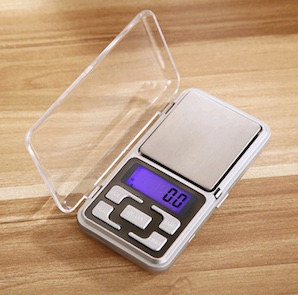
-----
Does rusting increase or decrease the object's weight?
Q. Hello,
I was wondering if somebody weighed a iron nail before it corroded, left it in salt water for 3 days, and weighed it again after it had rusted, how would the weight change? I thought that it would either decrease as the nail has been eaten away by rust or increase as there is also a coating of rust on the nail ... help me please, I don't know which is right!
student - London
2007
|
 Sheldon Taylor supply chain electronics Wake Forest, North Carolina 2007 Ed. note: We especially like that one, Sheldon :-) A. Corrosion by liquids is usually reported as metal weight loss per surface area per unit time (after cleaning off the corrosion). Use a household rust remover, as these contain inhibitors which prevent any additional loss of metal. See also letter #45169. - Goleta, California Rest in peace, Ken. Thank you for your hard work which the finishing world, and we at finishing.com, continue to benefit from. 2007 A. If you remove the nail from the salt water, and somehow remove any remaining salt water, it will weigh more. Now you have the weight of the iron, plus the weight of the oxygen that combined with it to make the rust.  Dave Wichern Consultant - The Bronx, New York 2007 ! If the test only takes 3 days why don't you try it yourself. In the time it's taken to receive this answer you could have had a result. John Martin- Wales 2007 A. Priya, Aerospace - Yeovil, Somerset, UK 2007 |
"Hands-on" learning is fun, maybe try a ...
Precision Electronic Scale

on
eBay
or
Amazon
(affil link)
A. Some of the iron is converted into iron oxide-rust. The oxide will weigh more than the iron did.
Some of the iron will become ferric or ferrous ions in the water giving you a slight loss.
The biggest problem will be the amount of water that the rust hydrates or mechanically retains. This will require drying at say 180 °F for 24 hours, then cooled and weighed.
It is going to take a good balance to be able to weigh to a tenth of a milligram and still be able to weigh the nail.
- Navarre, Florida
![]() Well just like to say thanks to whoever actually asked the question so I could find all your guys' answers. And sometimes we don't have 3 days... SO... yeah!
Well just like to say thanks to whoever actually asked the question so I could find all your guys' answers. And sometimes we don't have 3 days... SO... yeah!
- Palmer, Alaska, USA
April 4, 2018
Q, A, or Comment on THIS thread -or- Start a NEW Thread